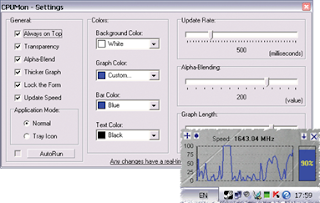There are different types of ADC and one of them is Parallel Comparator ADC or Flash ADC. The Flash ADC converts analog signal to digital signal very fast compared to other types of ADC such as Dual Slope ADC or Successive Approximation Register(SAR) ADC. That is its conversion time is small. The disadvantage of Flash ADC is that if the resolution is to be increased then the number of comparator has to be increased which makes the converter bulky.
The Flash ADC can be described as being composed of 3 different constituents- the Voltage Divider Resistor(VDR) network, the Comparators(op-amp) and the priority encoder.
The VDR network is used to create voltage reference with which the input analog signal is compared using the comparator. The voltage reference points is created using same value resistor and the number of the reference points to be created is decided by the number of digital bits one wants to produce. As an example, if n=3 bits is used for the digital signal output then the number of the voltage reference point is 2^3-1= 7. Next the input analog signal which is to be converted into digital signal is done by fedding the analog signal to the inputs of the comparators. The analog signal is fed into the non-inverting terminal of the op-amp and the voltage references are connected to the inverting terminal of the op-amp. The output of those op-amp becomes high in which the input signal voltage is greater than the reference voltage. If there are 7 op-amps comparator, then the analog signal voltage becomes greater than the reference voltage starting from the 3rd op-amp then the rest of the op-amp output also becomes high. That is the 3rd, 4th, 5th, 6th and 7th op-amp output are high.
The priority encoder gives priority to that op-amp output which is first activated high, in this case the 3rd op-amp. Then the priority encoder outputs digital bits corresponding to the digit 5.
Thus one use of priority encoder is in the ADC converter. Now the following describes how a priority encoder is modelled in VHDL.
The input to the priority encoder for the 3 bits digital signal output from the ADC are the 7 outputs from the comparator(op-amps). Depending upon which output gets activated first we produce corresponding digital outputs.
Let Cinp be the input to the priority encoder and Dcode be the digital codes. Then the entity declaration of this priority encoder becomes-
entity priority_encoder is
port(
Cinp : in std_logic_vector(7 downto 0);
Dcode : out std_logic_vector(2 downto 0)
);
end priority_encoder;
Next we need to create the architecture for the priority encoder. The following is the VHDL code for the flash type ADC priority encoder:
architecture priority_encoder_arch of priority_encoder is
begin
Dcode <= "111" when (Cinp(7)=1) else
"110" when (Cinp(6)=1) else
"101" when (Cinp(5)=1) else
"100" when (Cinp(4)=1) else
"011" when (Cinp(3)=1) else
"010" when (Cinp(2)=1) else
"001" when (Cinp(1)=1) else
"000";
end priority_encoder_arch;








 Bing Desktop automatically updates daily the Windows desktop background image to the beautiful image that is on the Bing.com homepage. The user may override the image of the day by manually selecting a different image from the prior eight days.
Bing Desktop automatically updates daily the Windows desktop background image to the beautiful image that is on the Bing.com homepage. The user may override the image of the day by manually selecting a different image from the prior eight days. Crea, convierte, descomprime e incluso graba imágenes ISO
Crea, convierte, descomprime e incluso graba imágenes ISO
 Opera es un navegador muy a tener en cuenta es algo que todo el mundo conoce hoy en día. Cargado de funciones, pero sin que eso afecte a su rapidez, es un navegador que "se hace querer".
Opera es un navegador muy a tener en cuenta es algo que todo el mundo conoce hoy en día. Cargado de funciones, pero sin que eso afecte a su rapidez, es un navegador que "se hace querer".


 Este post está destinado a todos aquellos felices usuarios de cuentas Premium de Rapidshare. El cual les hará ahorrar MUCHO tiempo. Quiero explicar un poco, como poder descargar con Orbit + Flashgot (para esto es necesario usar Mozilla Firefox).
Este post está destinado a todos aquellos felices usuarios de cuentas Premium de Rapidshare. El cual les hará ahorrar MUCHO tiempo. Quiero explicar un poco, como poder descargar con Orbit + Flashgot (para esto es necesario usar Mozilla Firefox).




 3.-Como ven tiene varios enlaces, Y como hacer para descargar todo a la vez? Pues muy sencillo,
3.-Como ven tiene varios enlaces, Y como hacer para descargar todo a la vez? Pues muy sencillo,  4.-Le damos a
4.-Le damos a  5.-Pues seleccionamos todos los partes dandole a
5.-Pues seleccionamos todos los partes dandole a  Aprenda como crear unidades virtuales de CD/DVD y montar archivos ".iso",".daa", etc. con PowerISO.
Aprenda como crear unidades virtuales de CD/DVD y montar archivos ".iso",".daa", etc. con PowerISO.  Free PROGRAMS
Free PROGRAMS 
